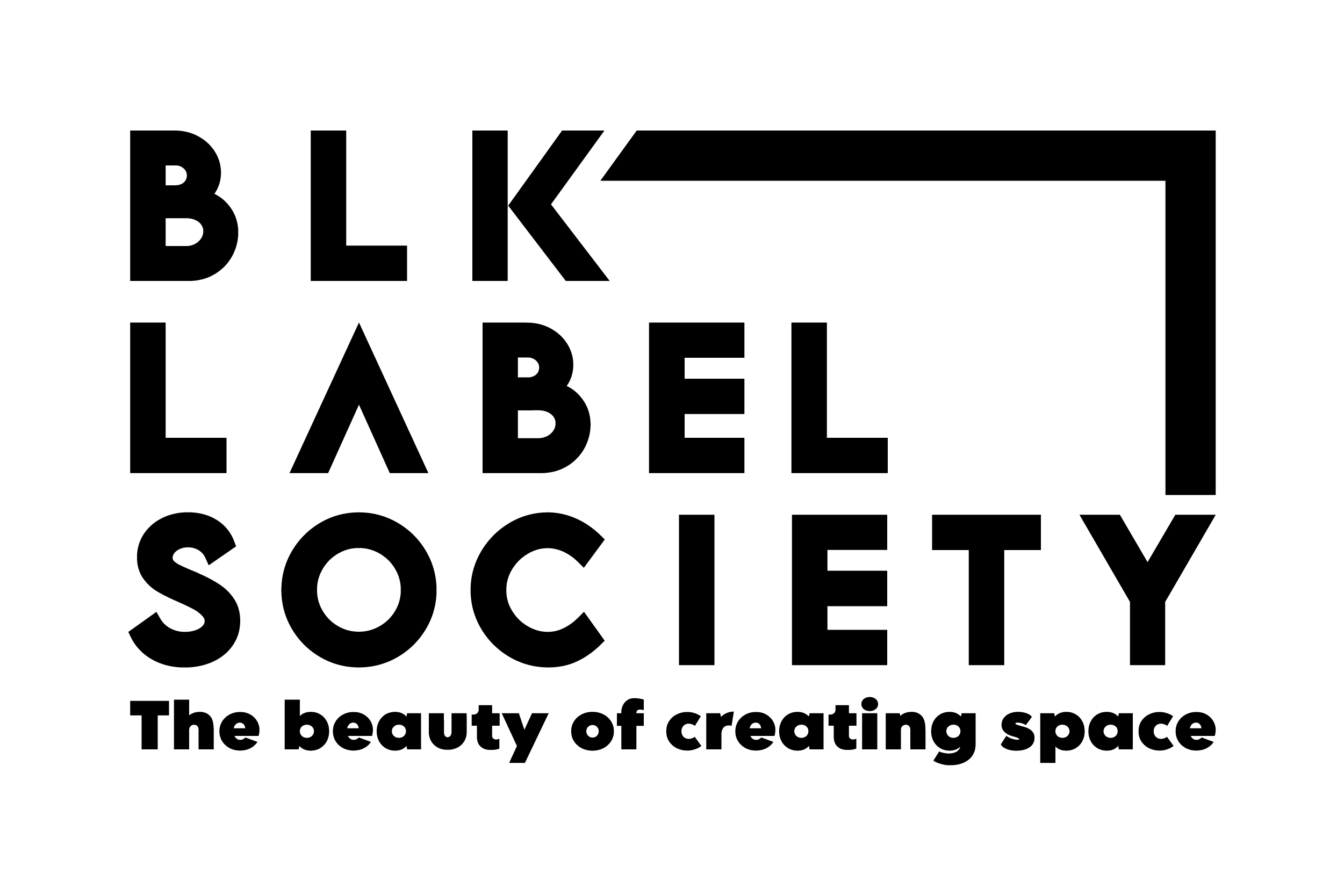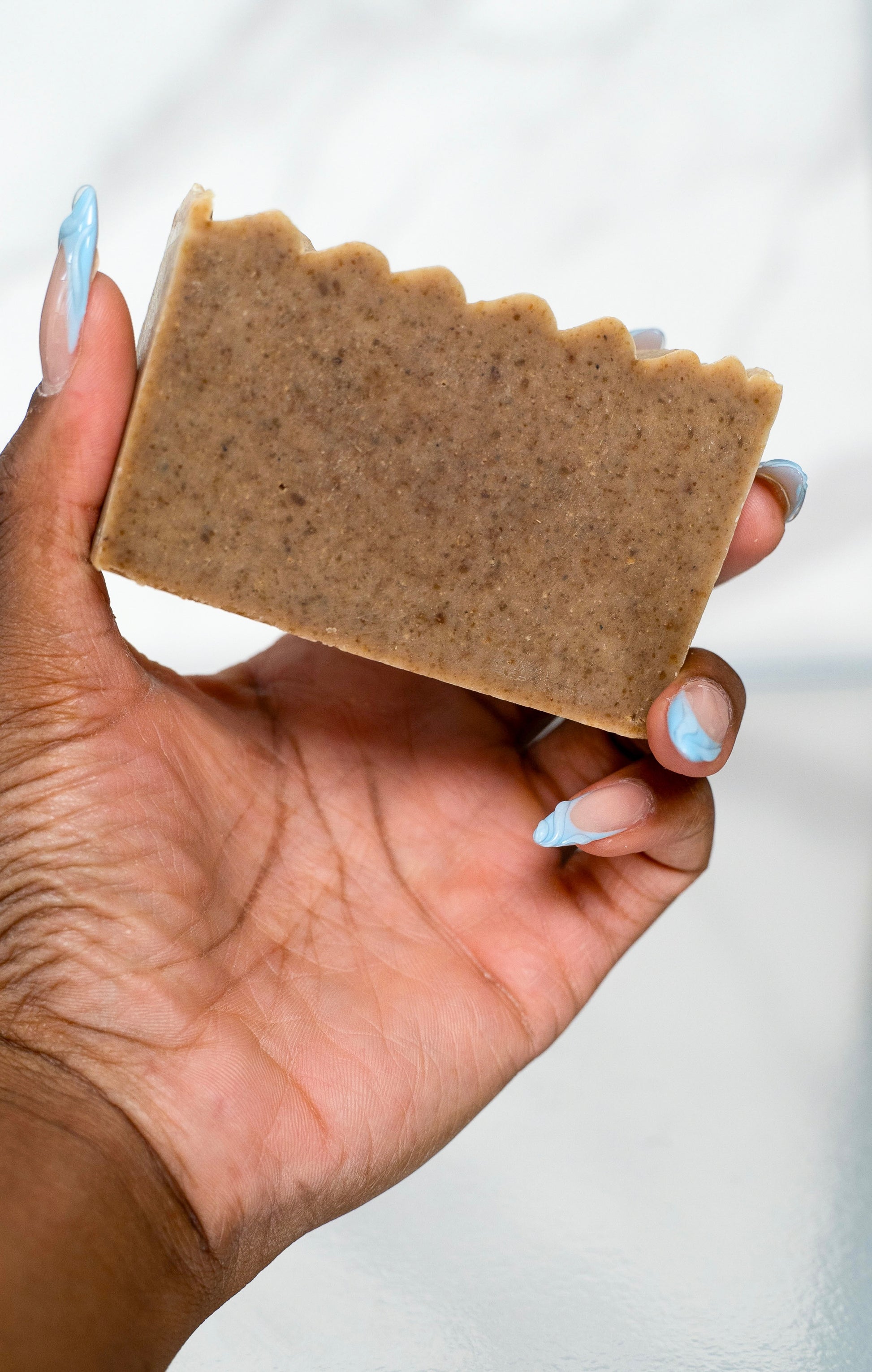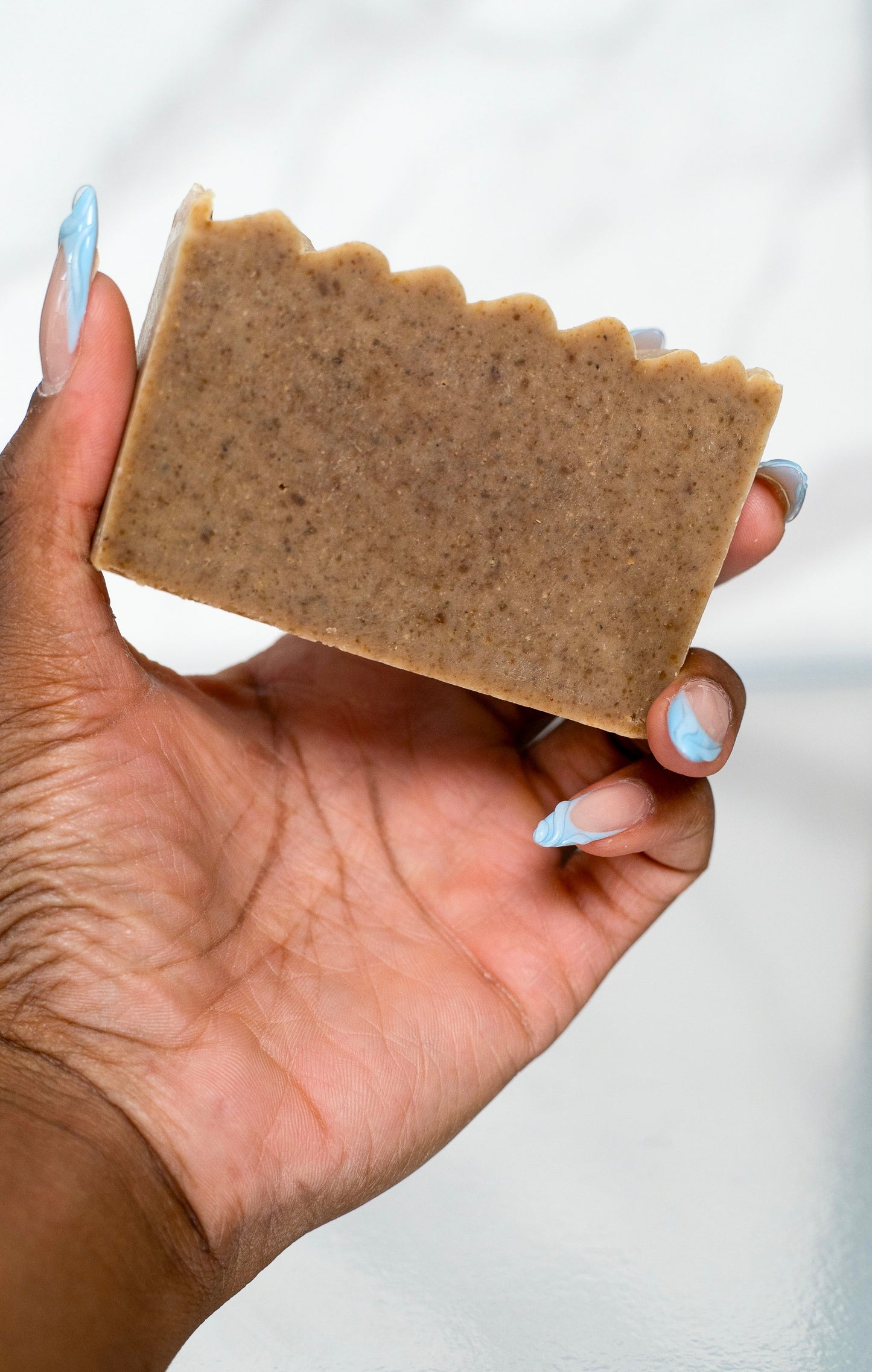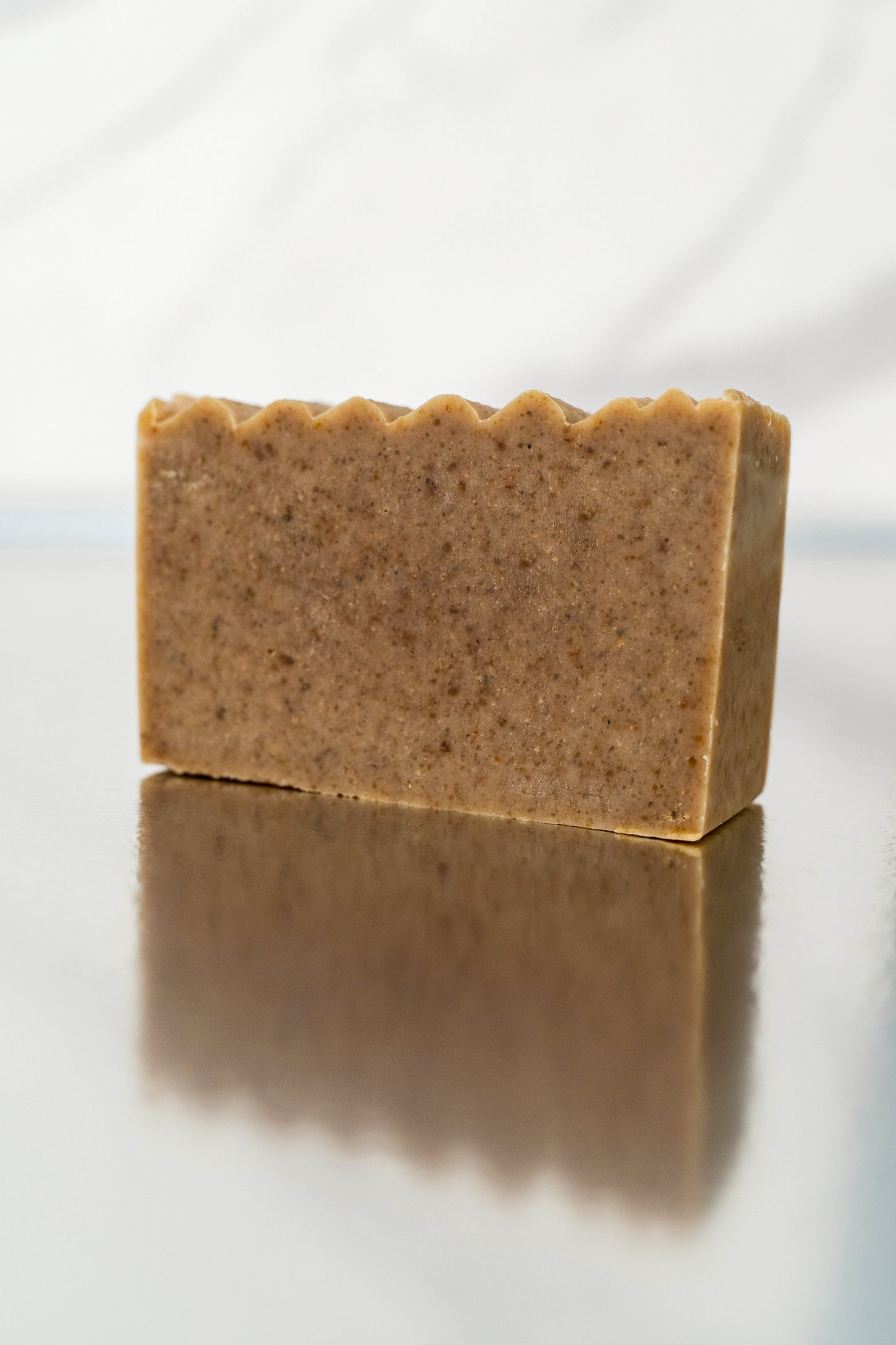Fall isn't the only thing shedding old layers this season. While trees drop their leaves and nature prepares for renewal, your skin is doing the exact same thing. Constantly regenerating, refreshing, and revealing new cells beneath the surface. But here's a thing, sometimes our skin needs a little help of letting go of what no longer serves it. That's where exfoliation comes in.
If you've ever wondered whether exfoliating is really necessary, especially for melanated skin, the answer is a resounding yes. Let's talk about why.
Understanding Skin Cell Turnover: Your Skin's Natural Renewal Cycle
Your skin is incredibly smart. Every single day, it's working behind the scenes to replace old, damaged cells with fresh, healthy ones. This process is called skin cell turnover, and it happens in cycles that vary throughout your lifetime.
Here's how it works: new skin cells are born in the deepest layer of your epidermis (the basal layer). Over time, these cells gradually push their way up toward the surface. Once they reach the top, they spend some time doing their job, protecting you from UV rays, environmental pollutants, and daily wear and tear. Eventually, these cells die and are naturally shed from the skin's surface.

How Age Affects Your Skin Cycle
The speed of this renewal process changes dramatically as we age. Here's what the science shows:

Think about that: by the time you reach your 50s, your skin may be taking three times longer to complete what it did effortlessly in your 20s.
What Else Affects Your Skin Cycle?
Age isn't the only factor at play. Your skin cell turnover can also be influenced by:
- Hormones: Fluctuations during pregnancy, menopause, or monthly cycles can speed up or slow down turnover
- Stress: Chronic stress impacts everything, including your skin's ability to regenerate
- Skin health and conditions: Conditions like eczema, psoriasis, or chronic inflammation can disrupt the normal cycle
- Sun exposure: UV damage accelerates aging and disrupts healthy cell turnover
- Overall health: Sleep, nutrition, hydration, it all matters
Why a Slow Turnover Is a Problem
When cell turnover slows, dead cells start to accumulate on the surface. This isn't just a cosmetic issue, it creates a cascade of skin problems:
- Dull, lackluster complexion: Dead cells scatter light unevenly, robbing your skin of radiance
- Fine lines and wrinkles: The buildup emphasizes texture and makes lines more visible
- Sagging skin: Loss of fresh, plump cells contributes to loss of firmness
- Clogged pores and breakouts: Bacteria become trapped beneath dead cell buildup
- Uneven skin tone and hyperpigmentation: Discolored cells linger instead of shedding, making dark spots more persistent
- Rough, flaky texture: The outermost layer becomes thick and uneven
This is where exfoliation becomes essential, it helps speed up the process your skin is already trying to complete, bringing you back closer to that youthful turnover rate.
What Makes Melanated Skin Unique
Now, let's talk about melanin. Melanin is the pigment that gives your skin its beautiful color, and it does so much more than just determine your complexion. It's your body's built-in sunscreen, protecting your DNA from UV damage and providing antioxidant benefits. (SPF is still important)

But melanin also plays a unique role in the exfoliation conversation. Research shows that melanated skin processes and retains melanin differently than lighter skin tones:
Key findings:
- Melanosomes (the cellular packages that contain melanin) are retained longer in darker skin cells as they move toward the surface
- Melanosomes in lighter skin cells degrade more quickly (within 48 hours) compared to darker skin, where they persist longer
What does this mean for you? It means that when dead skin cells accumulate on melanated skin, they're carrying more melanin with them. This can contribute to:
- A buildup that makes skin look dull or ashy
- Post-inflammatory hyperpigmentation lingering longer
- Uneven skin tone becoming more pronounced
- Products not penetrating as effectively
The bottom line: Melanated skin absolutely benefits from regular exfoliation to reveal the fresh, radiant skin underneath and prevent the buildup that can exacerbate pigmentation concerns.
Why Exfoliation Is Non-Negotiable in Your Routine
Think about your skincare routine. You cleanse, right? Of course you do, cleansing removes dirt, oil, and impurities. It's skincare 101. Well, exfoliation deserves the exact same foundational status.

Cleansing clears the surface. Exfoliation goes deeper, removing the dead cells that cleansing alone can't touch. Together, they create the clean slate your skin needs to actually benefit from everything else you apply. Our natural handmade soaps are preferred over store bought synthetic detergents
Here's why exfoliation is essential:
Your Products Work Better When You Exfoliate
Here's the thing: that expensive serum? That nourishing body butter? That targeted treatment for hyperpigmentation? They're designed to work with your skin's outermost layer, the stratum corneum, where many skincare/body care actives do their job beautifully.
But here's where exfoliation comes in. While your products can absolutely work on the surface layer of skin, excessive dead cell buildup creates a physical barrier that prevents optimal absorption and effectiveness. Think of it like this: your moisturizer can hydrate dead skin cells just fine, but when there are too many layers of them piled up, your products have to work harder to deliver results.
Regular exfoliation clears away that excess buildup, allowing your skincare and body care to:
- Absorb more efficiently into the stratum corneum
- Work more effectively at the surface where they're meant to function
- Deliver visible results faster
- Give you better return on your skincare investment

You're not just removing dead cells, you're creating the optimal canvas for your products to perform at their best.
Patience Is Part of the Process
Here's something important to remember: skincare takes time. When you start a new routine or add exfoliation, you need to give your skin 1 to 3 full skin cycles to see real results. Depending on your age, that means:
- In your 20s: Wait 4 to 12 weeks
- In your 40s: Wait 9 to 24 weeks
- In your 50s+: Wait 12 to 36 weeks
Why so long? Because quality skincare products (especially those with penetrable actives) work at the deeper layers of your skin, making changes to cell health, vitality, and strength. When those improved cells finally make their way to the surface, that's when you see the glow, the smoothness, the results.
Take our 8oz Body Creams for example, they may make your skin feel immediately soft and each is packed with actives, but true transformation requires patience and consistency. Exfoliation helps accelerate this process by clearing the path for both new cells and your body care products.
Manual Exfoliation: The Power of Physical Touch
When we talk about exfoliation, there are two main categories: chemical (using acids like AHAs and BHAs) and physical/manual (using scrubs, brushes, or nets). Both have their place, but there's something particularly satisfying about manual exfoliation.
Exfoliating nets fall into the manual exfoliation category, and they offer several benefits:
1. Immediate Dead Cell Removal
The gentle friction of the net physically buffs away dead skin cells that have completed their cycle but haven't shed on their own. You can literally see and feel the difference after one use.
2. Improved Blood Circulation
This is where things get interesting. When you use an exfoliating net with gentle, circular motions, you're not just removing dead skin, you're also stimulating blood flow to the area. Improved circulation means:
- More oxygen and nutrients delivered to skin cells
- Enhanced cell regeneration
- A natural, healthy glow
- Better overall skin health
3. Lymphatic Support
While exfoliating nets aren't a substitute for dedicated lymphatic drainage massage, the gentle, sweeping motions, especially when done in an upward direction, can provide mild lymphatic support. Your lymphatic system helps remove toxins and waste from tissues, and gentle stimulation can help support this natural detox process. It's a bonus benefit, not the primary function, but it's there.
4. Helps with Specific Skin Concerns
Physical exfoliation is particularly effective for conditions like keratosis pilaris (KP), those small, rough bumps that commonly appear on arms, thighs, and buttocks. KP occurs when keratin builds up in hair follicles, creating plugs. Regular physical exfoliation with a net helps:
- Dislodge keratin buildup
- Smooth rough texture
- Reduce the appearance of bumps
- Improve the overall look and feel of affected areas
While chemical exfoliants can help with KP too, the physical action of manual exfoliation is often especially effective at addressing the texture issue directly.
Choosing Your Exfoliating Tool: It's Not One-Size-Fits-All
Here's where we need to have an honest conversation. The internet is full of people praising one type of exfoliating tool while demonizing another. The truth? They all exfoliate, they just work differently, and what's right for you depends on your skin type, preferences, and needs.

Let's break down the main options:
Types of Exfoliating Tools/Scrubs/Soaps
Exfoliating Nets: Long, stretchy nets, made from nylon, that you can use for hard-to-reach areas like your back. They come in various lengths, weaving patterns, and textures from gentle to intensive.
Exfoliating Gloves/Mitts (Kessa Mitts): Worn like a glove, these offer more control and precision. Traditional kessa mitts originated in Middle Eastern and North African hammam bathing rituals and have been used for centuries for deep exfoliation. The glove format makes it easy to exfoliate and gives you better grip control. You'll often see visible results as dead skin cells literally roll away during use.
Natural Fiber Nets (like ramie or sisal): More eco-friendly and biodegradable. They can be slightly more textured, which some people love for a deeper exfoliation. May take longer to dry.
Mesh Poufs: Softer and gentler, ideal for sensitive skin or body areas that need a lighter touch.
Physical Scrubs: These come in various forms, but not all scrubs are created equal:
- Sugar, Salt, Seed Scrubs: While popular, these crystalline scrubs have jagged, irregular edges that can be harsh on skin. The sharp crystals can create micro tears in the skin's surface, especially if you apply too much pressure. These microscopic injuries can lead to irritation, sensitivity, and even infection in some cases.
- Exfoliating Bar Soaps with Gentle Beads: A much gentler alternative. Soaps formulated with round, smooth exfoliating beads like jojoba beads provide effective exfoliation without the harshness. The spherical shape glides across skin, buffing away dead cells without causing micro tears. This makes them ideal for regular use and sensitive skin. Our handmade soaps feature these gentle, biodegradable jojoba beads, combining cleansing and exfoliation in one step.

Material Matters
Nylon-Based Tools: Typically lightweight, fast-drying, and durable. They're often machine-washable and less likely to harbor bacteria due to quick drying time. Great for daily use if your skin tolerates it.
Microfiber Technology: Advanced fibers designed for deeper exfoliation. These materials are particularly effective at lifting dead skin cells and are usually very durable, but not the most comfortable on the skin.
Features to Consider
When shopping for exfoliating tools, look for:
- Drying time: Faster-drying materials (usually synthetic) are less likely to develop mildew or bacteria
- Machine-washable: A huge plus for hygiene and longevity
- Length: Longer nets (like those that stretch 5+ feet) make it easier to reach your back
- Texture variety: The ability to choose between gentle, medium, or intensive exfoliation based on your needs
- Gentleness: If you're planning to exfoliate daily, you need something gentle enough not to irritate
At BLK Label Society, our exfoliating nets check all these boxes. They're machine-washable, dry quickly to prevent bacteria buildup, and we offer a variety of textures so you can choose what works best for your skin, from our Gentle Exfoliating Net for everyday use to our Intensive option for deeper exfoliation, plus a Mini size for travel or targeted areas.
The Real Talk
Yes, some exfoliating tools have gotten bad press. Some are "too rough" or "harbor bacteria" or "aren't sustainable." But here's what matters most: Are you exfoliating your skin?
If a particular tool works for you, if it fits your budget, feels good on your skin, dries quickly in your climate, and you actually use it consistently, then it's the right tool for you. Don't let skincare gatekeeping stop you from taking care of your skin.
The "best" exfoliating tool is the one you'll actually use.
How to Exfoliate Properly (Yes, There's a Technique)
Getting an exfoliating tool is step one. Using it correctly is step two. Here's how:
In the Shower (Most Common Method):
- Wet your skin and the tool: Both should be thoroughly dampened with warm water
- Add your cleanser: Apply your favorite bar soap or body wash to the tool. We love pairing our exfoliating nets with our handmade soaps, available in bar form or our unique oil-to-foam formula that transforms into a luxurious lather
- Use gentle, circular motions: No need to scrub aggressively, let the texture of the tool do the work
- Pay attention to rough spots: Elbows, knees, heels, these areas can handle a bit more attention
- Be gentle on sensitive areas: Your neck, chest, and any areas with active breakouts or irritation need a lighter touch
- Rinse thoroughly: Make sure all cleanser and dead skin cells are washed away
- Dry your tool properly: Rinse it well, wring it out, and hang it to dry in a well-ventilated area
- Moisturize immediately: Your freshly exfoliated skin is primed to absorb hydration, don't skip this step!
Alternative: Dry Brushing Some people prefer to exfoliate with a dry brush before showering. This technique involves using long, sweeping strokes on dry skin (always toward your heart) to exfoliate and stimulate circulation. Then you shower to rinse away the dead skin cells. It's a matter of personal preference, both methods work well.
How Often?
- Normal/oily skin: 3 to 4 times per week, or daily if using a very gentle net
- Dry/sensitive skin: 2 to 3 times per week
- Melanated skin with hyperpigmentation concerns: 3 to 4 times per week can help with evening skin tone
Listen to your skin. If it feels irritated or overly sensitive, dial it back.
The Bottom Line: Just Do It
Fall reminds us that letting go is natural. Trees don't stress about which leaves to drop first, they just shed what no longer serves them and make room for new growth.
Your skin wants to do the same thing. All you need to do is give it a little help.
Whether you choose a nylon net, a natural fiber option, or something in between, whether you're team "exfoliate daily" or "twice a week is plenty," what matters is that you're being intentional about supporting your skin's natural renewal process.
For melanated skin especially, regular exfoliation isn't just about aesthetics. It's about helping your skin function at its best, preventing buildup that can worsen hyperpigmentation, and revealing the radiant, healthy skin that's been there all along.
So this fall, as the leaves tumble down and the season shifts, consider this your sign to refresh your skincare routine. Pick up an exfoliating tool, any tool that calls to you, and start giving your skin the support it deserves.
Because dead skin cells should fall off faster than autumn leaves.
Ready to glow? Explore our exfoliating net collection and handmade soaps to find the perfect match for your skin.
References:
https://www.medifine.co.uk/what-is-a-skin-cycle/
https://pmc.ncbi.nlm.nih.gov/articles/PMC10379423/
https://pmc.ncbi.nlm.nih.gov/articles/PMC7069578/




